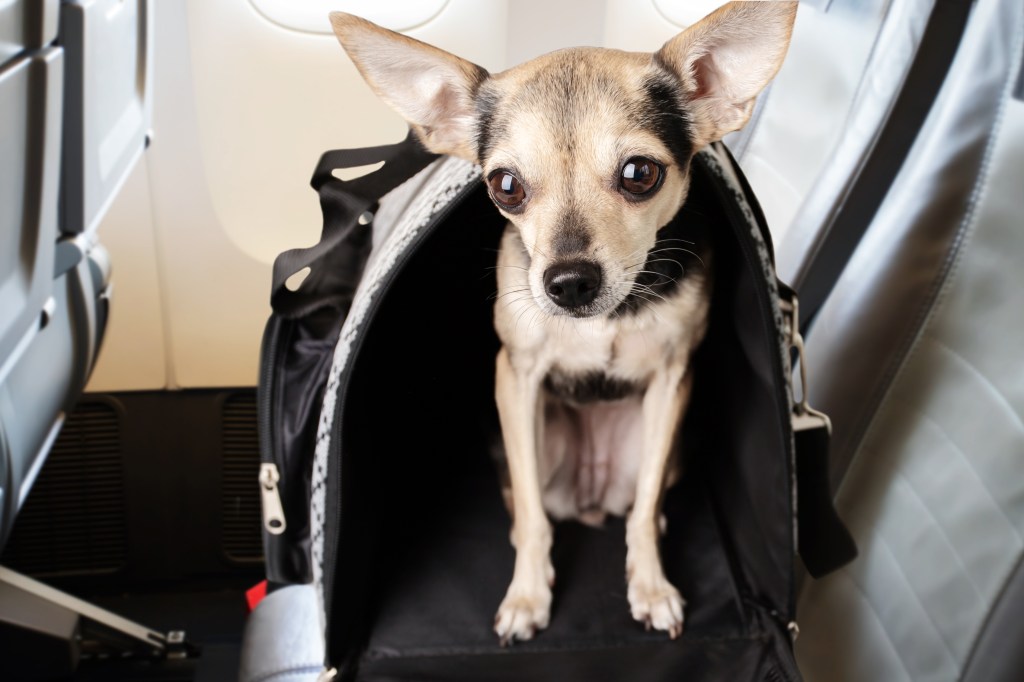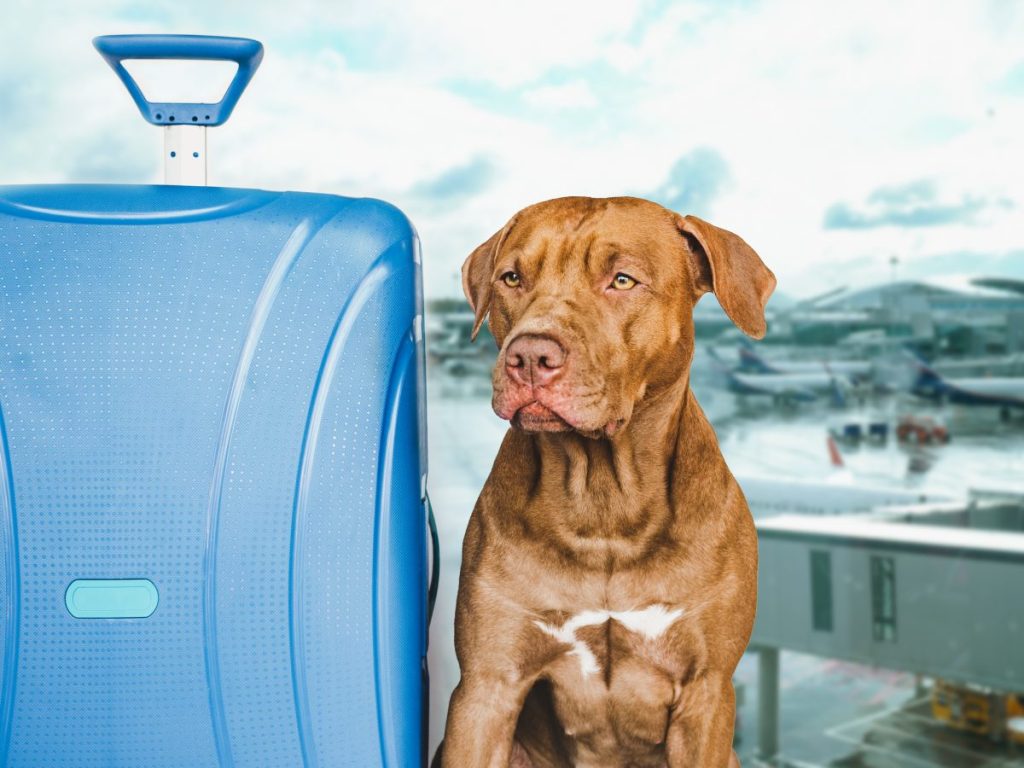Flying with your dog can be a stressful situation. You’ll likely be bombarded with anxious thoughts during the flight. Is your fur baby cold? Are they being thrown about? Do they have to go to the bathroom? You probably won’t be able to relax until your pup comes out of the oversized luggage area. It doesn’t have to be this way. With some simple preparations, you can reduce the tension associated with flying for both you and your dog. Here’s how to keep your dog safe while flying.
Get comfortable with the crate

The key to keeping your dog safe while flying is to get an airline-approved crate, and be sure that Fido thinks of this crate as their den. You may need to spend time getting your dog comfortable with being in his crate for long periods of time. There will also be a lot of loud noises on the plane and strangers walking around in the cargo loading area.
Here is a suggested exercise to get Fido crate-trained for air travel. Feel free to ask a friend to help you out. First, put your dog inside the crate. Second, pick the crate up and walk a bit. Third, place the crate inside your car. Then, while your pup is still inside the crate, drive to a park or busy location. Again, carry the crate out of the car with your dog still inside. This way, Fido can get used to loud noises and a busy environment while being handled inside his crate.
Outfit the crate
There are certain items that you will want to place on the outside and inside of the crate to make it ready for travel. Place a few bright orange “live animal” stickers on the outside of the crate. Most airlines will do this as protocol, but it doesn’t hurt to have them on the crate before you arrive.
The next thing is to type up a one-page profile of your dog that includes your contact information with cell phone number. Include a letter that states something like: “Hi, I’m Tasha. I am a nice Labrador Retriever. I don’t bite. Please contact my parents if I am lost. I’ll probably need to eat and walk if there is a flight delay. I’ll be forever grateful if you can help me!” Tape this to the outside of the crate.
Make sure water and food dishes are attached to the inside of the crate. You may want to include a couple of soft toys that your dog loves and maybe a T-shirt that has your scent. Be sure to tape a small bag of food and a leash to the top of the crate.
Fly direct if possible

It’s easier to keep your dog safe while flying if the flight is short. Check the length of the flight and try to book a direct flight when at all possible. This will help you avoid plane changes or delays, not to mention lost luggage. It is important to match the length of the flight with that of your dog’s temperament and what they can handle. Whether your dog is being shipped as cargo or is riding in the cabin will help determine what they experience during the flight. Consider whether your dog can be in their crate for six hours or for whatever length of time will be necessary to arrive at your destination.
Compare airlines
Each airline has different requirements and policies for dog travel. Check with the airline’s policies regarding feeding times, arrival times, crate requirements, veterinary records, costs, and weight limits. There may be more requirements for different airlines.
Check with the airline to make sure that the pet storage area is climate-controlled and pressurized. If it is not, choose another airline. Also, when flying in certain weather, you will want to know if your dog will be exposed to the elements or sheltered before the flight.
Get health clearance
Get a clean bill of health certificate from your veterinarian for Fido to fly. Your dog cannot fly without veterinarian records stating that they are in good health. Most airlines require veterinarian health certificate records no more than 30 days old. Some airlines require the certificate date no more than 10 days from your departure date. This is important to take into account not only for your departure date but for your return date as well. Otherwise, you might have to get another checkup before the return flight.
Calculate feeding time
Your dog may or may not get nervous about the flight. It is a good rule of thumb to feed your dog anywhere from four to six hours before your flight time. (Not the time you’ll arrive at the airport, but the actual take-off time for your plane.) Give your dog minimal water to avoid full bladders.
Get some exercise
Every dog has a different level of energy. Some need to expend this energy before a long flight. Some airports have dog run areas. An airport that has an onsite dog area is a perfect place to play with your dog before placing them in their crate. This will also give them a good chance to relieve themself before the flight.
Stay calm

Even though you know your pup will likely be fine during the flight, the separation and inability to see what their environment is like can be unnerving. It is important to give plenty of reassuring hugs and kisses to your dog. When you’re calm and confident, then your pet will follow your lead and realize there is nothing to worry about.
If you are emotional about the trip, your pet may pick up on this and become concerned about the adventure. Try to keep the mood light. Once on board the aircraft, ask the flight attendant to confirm that your dog is loaded and secure. They may be able to give your dog a little extra water in the dish that you provided in his crate before take-off. This will reassure you that your dog is with you on the flight. (This is especially important if you have a connecting flight.)
Plan for reunification
Before taking the flight, ask the ticket person where you will be picking up your dog. Almost all airlines will have your dog come out of the oversized luggage area, while some may have you go to their cargo building separate from the baggage claim building. A short drive may be required.
Keeping your dog safe while flying is easier than you may think. Taking the extra time to become mentally and practically prepared for a trip involving out-of-the-ordinary logistics will make all the difference to you and your dog.









